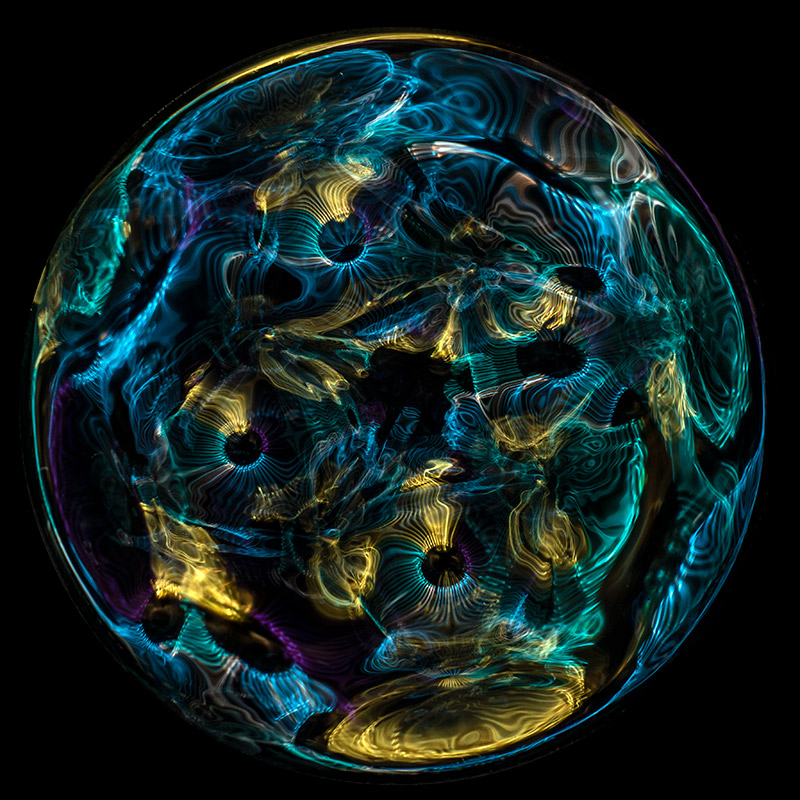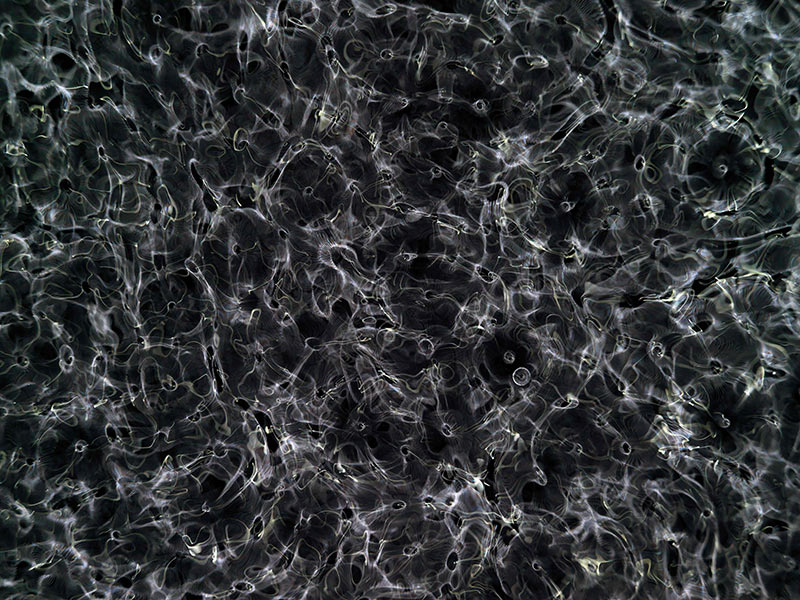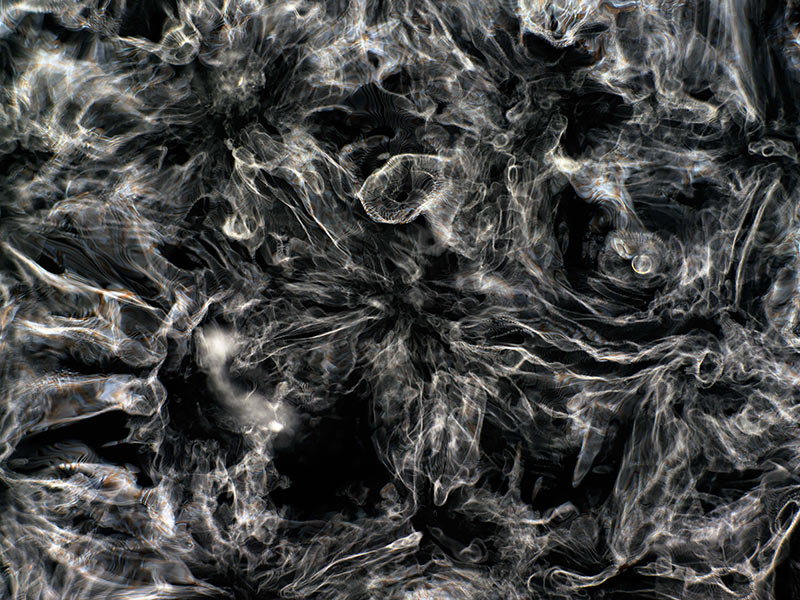Cymatics The Study of Wave Phenomena, a philosophical & artistic view of physics & science in photography
Author: Distil Ennui | Post Date: 13-07-2023What is a cymatic wave? Coming from the Greek word: κῦμα, is the study of visible sound and vibration at a point of resonance. The term was coined by Hans Jenny (1904-1972) a physician and scientist; stated in ‘Cymatics: The Study of Wave Phenomena’, “This is not an unregulated chaos; it is a dynamic but ordered pattern.”

Gravitational Wave, Plate 6513, dated 2023 from the 'Cymatic Water & Light' Series
Cymatics is the study of visible sound and vibration. It explores the patterns and structures formed by sound waves as they interact with different mediums. The term "cymatics" was coined by Hans Jenny, a Swiss physician and natural scientist, in the 1960s. However, the principles and phenomena observed in cymatics have roots in earlier scientific and artistic endeavours and can be traced back to ancient times when scholars and philosophers contemplated the nature of sound and its effects on matter. The Greek philosopher Pythagoras, in the 6th century BCE, recognised the relationship between sound and geometry. He observed that certain musical intervals produced harmonious sounds, which he believed were related to mathematical ratios.

Gravitational Wave, Plate 0255, dated 2023 from the 'Cymatic Water & Light' Series
In the 18th century, Ernst Chladni, a German physicist and musician, made significant contributions to the field of cymatics. Chladni conducted experiments where he spread fine sand or powder over metal plates and then vibrated the plates with a violin bow. As a result, the sand would arrange itself into intricate patterns and shapes on the plate's surface. Chladni's experiments demonstrated the visual manifestations of sound waves and laid the foundation for further investigations into cymatics.

Gravitational Wave, Plate 0173, dated 2023 from the 'Cymatic Water & Light' Series
Jenny's extensive research and documentation led to the publication of his seminal work, "Cymatics: The Study of Wave Phenomena." In this book, he presented a comprehensive collection of images and descriptions of the patterns and forms generated by sound vibrations. Jenny's work not only contributed to scientific understanding but also attracted interest from artists, musicians, and philosophers, who recognised the aesthetic and philosophical implications of cymatics.

Gravitational Wave, Plate 0208, dated 2023 from the 'Cymatic Water & Light' Series
Cymatics is a fascinating field of study that explores the visual manifestations of sound and vibration. It has provided valuable insights into the relationship between sound waves and the physical world, highlighting the intricate patterns and structures that can arise through vibrational interactions. In the works you see here, they are created using only photography, sound and specific volumes of liquids, in shaped petri dishes; no CGI or post production is used, what you see is actually created in real life, then captured on film.
Collaboration video artwork with editing artist Oleg Deetz & audio landscape by SubOctane.
I hope you found this journal entry informative, please stay connected.
Join the mailing list.. Register
Telegram Channel.. DistilEnnui
Instagram.. AJHamilton.Artist
Twitter.. DistilEnnui